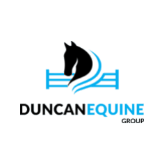Fencing on New Zealand’s hills, slopes and uneven steep terrain can be difficult for horse property owners. Traditional methods demand meticulous planning and execution to ensure the safety, cost-effectiveness, and durability of your horse fencing. The common challenges with fencing hilly terrain include an intensive installation process, sagging, safety and visibility for livestock, and considerations around the maintenance of hard-to-reach areas.
Challenges of uneven terrain
The key to fencing uneven terrain is choosing the correct materials. When the proper thought goes into which fencing materials best suit your property, you can save yourself the headache of lengthy, difficult installations and high maintenance.
Traditional fencing uses rigid materials. Making these work in hilly areas requires extensive grading and levelling of the landscape, which is not always possible. In this case, the “contouring” technique is a labour-intensive job that involves tailored adjustments to each panel of the fence so that it can match the slope of the land. You can enhance stability by positioning fence posts at every peak and valley; however, this does require more frequent placements, and hence more fence posts, which can significantly increase costs.
The most common problem faced for fencing hilly areas is sagging, this is especially prominent in fences with timber posts. This is because uneven pressure on posts causes sections to buckle and lose tension. This imbalance, caused by the varied landscape, poses a significant risk to your livestock for getting tangled in loose wires, and to the overall longevity of your fences. This can be addressed by opting for a fence with wider vertical spacing to minimize uneven pressure across the fence line. However, keep in mind, wider vertical spacing can mean bigger gaps for foals or small horses to try and push through. A handy tip for the corner posts is to align the fence angle with the slope of the terrain when tying off on corner posts, ensuring proper tension across all horizontal wires.
Another area to consider when fencing your uneven terrain is the ease of access for maintenance. Often these areas are hard to get to for regular checks. Mountainous landscapes are particularly exposed to diverse weather conditions. Timber posts can corrode or suffer from termite damage, which can be harder to spot in uneven arenas that are not easily checked.


Key considerations for fencing your uneven terrain
Low maintenance fencing
Fencing upkeep can range from daily checks to annual tasks, depending on the material you use. Choosing low-maintenance materials minimises routine inspections, allowing you to tackle other priorities. While wood fences exude a nostalgic charm, they demand a significant upkeep. Consider alternatives like Stallion Rail, or Duncan Equine’s Shockcoat. These alternative options are designed to make fencing in mountainous and difficult areas easy as they adapt to the curves of the land.
Stallion Rail is designed and laboratory-tested to ensure it will stand up to harsh conditions. For this reason, it requires minimal maintenance, which is a significant advantage when installing fencing in hard-to-reach locations that can’t be accessed with vehicles or machinery. Stallion Rail and PVC posts don’t rot, corrode or suffer from termite damage, which can be especially important in uneven terrains where moisture and soil conditions may vary.
Safety and visibility
Steep terrain can pose safety hazards, making it particularly important to choose a material with high visibility for your horses. Stallion Rail, for example, offers excellent visibility due to its wide rail design. This feature is valuable for hilly areas to help prevent your horses from sliding into fences or injuring themselves.
Cost-effective solutions
When looking at price points, the cheapest is not always your most “cost-effective”. You should consider the ease of installation, reduced maintenance requirements, and long-term durability to properly evaluate the worth of your materials. In the long term, materials like Stallion Rail tend to be more cost-effective when compared to materials with a lower initial price that need more maintenance and intensive installations.
Quick and easy installation
Stallion Rail and Shockcoat fencing is lightweight and designed for easy installation, even on steep or uneven terrain. This can save both time and money during the installation process. Stallion Rail is designed to be completed with easy-to-use brackets and tensioners, making it a very feasible DIY project for property owners.
Fencing on uneven terrain demands careful consideration and strategic material choices. Challenges like sagging, visibility, and maintenance are not to be overlooked. Opting for adaptable materials like Stallion Rail can make the process much more straightforward. This material offers durability, low maintenance, enhanced safety, and easy installation. Prioritizing safety and cost-effective, long-term solutions ensures a secure paddock for your horses.






